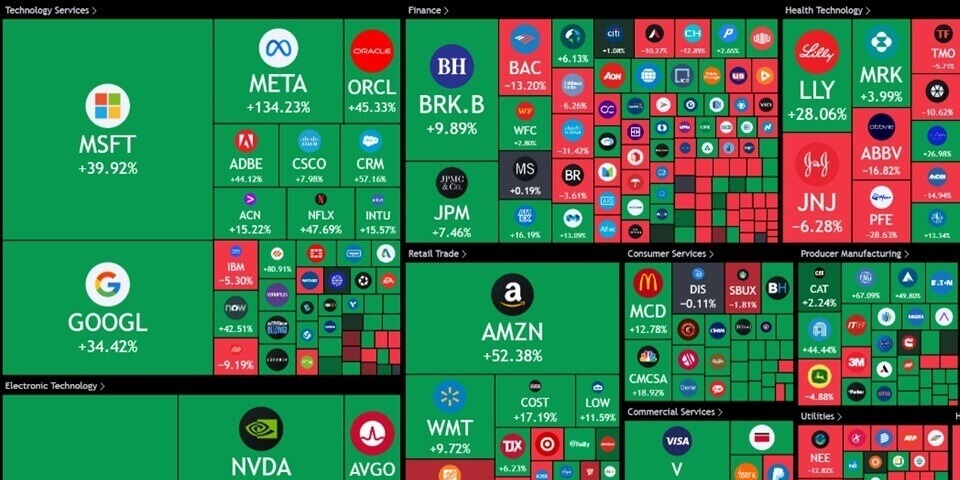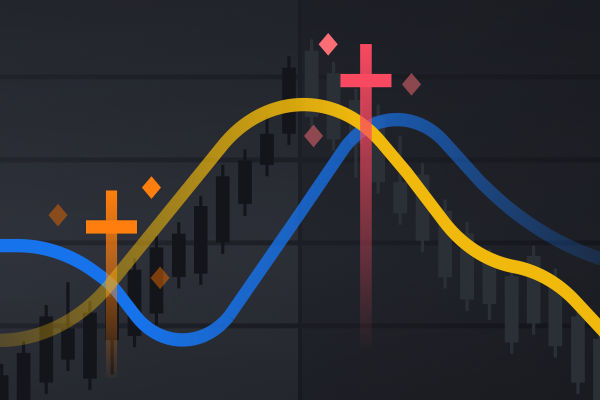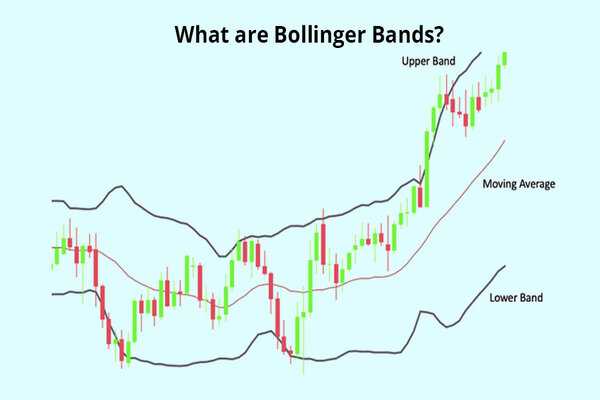Stock heatmaps are becoming increasingly popular among investors and traders looking for a quick, visual way to gauge the performance of the market. If you're new to the concept, it might seem a bit intimidating at first. However, once you understand the basics, they can be a powerful tool in your investing toolkit.
At their core, stock heatmaps are simply visual representations of market data. They take the data from thousands of individual stocks and present it in a way that allows you to quickly see trends, patterns, and areas of strength or weakness. By displaying stocks in different colours based on their performance, heatmaps allow you to absorb a large amount of information in a short period. But what does all this mean for someone who's just getting started in trading? Let's break it down.
What Are Stock Heatmaps and How Do They Work?
A stock heatmap is typically a grid where each stock is represented as a coloured box. The colour of the box indicates how that stock has performed in a specific period—often within a day, week, or month. Stocks that have seen a rise in value are shown in green, while stocks that have dropped in value are coloured red. The intensity of the colour usually correlates with the size of the change; a deeper shade of green means the stock has performed very well, and a deeper shade of red means it's been a poor performer.

The grid usually groups stocks by sector or industry, which can help traders quickly identify how specific sectors are performing. For example, if you're looking at a heatmap that shows all technology stocks, you'll be able to see at a glance which tech companies are doing well, and which are struggling. This can be particularly useful for spotting trends in specific sectors, rather than just individual stocks.
How Stock Heatmaps Can Aid in Your Trading Strategy
Now that you have a basic understanding of what a stock heatmap is, how do you use it in your trading? Stock heatmaps are most valuable when you use them to quickly identify market trends or potential investment opportunities. Let's say you're looking at a heatmap that shows the performance of all companies in the energy sector. If you see that most of the stocks are green, it might indicate that the sector is on an upward trajectory, making it a potentially good time to invest in energy stocks.
On the other hand, if you notice that most of the stocks in a particular sector are red, it could signal trouble in that sector, and it might be time to steer clear of those investments for the moment. Some advanced heatmaps also allow you to filter stocks based on additional criteria like market cap, volume, or volatility. This added layer of detail can help you refine your analysis and find stocks that meet specific criteria, whether you're looking for large-cap companies with stable growth or small-cap stocks with high potential.
Additionally, stock heatmaps can be useful for tracking overall market sentiment. If you're looking at a broad market heatmap and see that a majority of stocks are in the green, it could suggest that the market is experiencing a bullish phase, where prices are generally rising. Conversely, if the map is mostly red, it might indicate a bearish market, where stocks are in decline.
Key Benefits and Drawbacks of Stock Heatmaps
The primary advantage of using stock heatmaps is their ability to convey a large amount of information in a simple and digestible way. As a trader, you can scan the map and quickly identify which stocks, sectors, or industries are performing well, allowing you to make informed decisions without having to wade through individual stock charts or news articles.
Heatmaps also help with identifying patterns and trends over time. For instance, if you notice that a particular stock has consistently been in the green on a heatmap for several days or weeks, this could be an indication of sustained positive performance, which might lead you to consider it for investment. Conversely, if a stock has been showing up in red on multiple heatmaps, it could be a sign of ongoing underperformance.
However, there are some limitations to stock heatmaps. For one, they only give you a snapshot of stock performance based on price changes. While this is helpful for gauging the short-term direction of a stock, it doesn't tell you much about the long-term fundamentals of a company.
For instance, a stock might look green on a heatmap because its price has increased recently, but that doesn't necessarily mean the company's fundamentals are strong. It's important to remember that heatmaps are just one tool in your analysis toolkit and should be used in conjunction with other forms of research, such as company reports or fundamental analysis.
Furthermore, heatmaps can sometimes oversimplify market data. A single colour block may not capture the full story behind a stock's performance. For example, a stock might be up by a small percentage, but still be a good investment, while another might be down slightly but show signs of long-term growth potential. As a result, relying too heavily on stock heatmaps without considering other factors could lead to missed opportunities or costly mistakes.
How Traders Use Stock Heatmaps
To give you an idea of how stock heatmaps are used in practice, let's look at a few examples. Many institutional investors and traders rely on heatmaps to monitor the performance of specific sectors or industries. If you're a trader focusing on technology stocks, for instance, a heatmap could help you quickly spot which companies in the tech sector are seeing significant gains or losses. You might notice that cloud computing companies are outperforming others, prompting you to adjust your portfolio accordingly.
Retail traders also use heatmaps to monitor broader market trends. During periods of heightened market volatility, such as a financial crisis or economic downturn, heatmaps can help you track which stocks are performing well despite broader market conditions. For example, during the COVID-19 pandemic, healthcare stocks were often seen in green on heatmaps, indicating strong performance even as the broader market struggled. Traders who were quick to notice this trend could have capitalised on the shift towards healthcare-related stocks.
Additionally, heatmaps can also be used to monitor the performance of international markets. If you're a trader looking to diversify globally, you might use heatmaps to identify which countries or regions are seeing the best performance. For example, if you see that Asian markets are consistently in the green while European or North American markets are red, you might decide to reallocate your investments towards Asia.
In summary, stock heatmaps provide a straightforward and effective way for investors and traders to assess market performance, identify trends, and make informed decisions. While they are not perfect tools on their own, they can serve as a valuable complement to other forms of analysis. Whether you're new to the stock market or an experienced trader, using such tools can help you navigate the complexities of the market with ease, giving you a clear visual representation of how stocks, sectors, or entire markets are performing at a glance.
Disclaimer: This material is for general information purposes only and is not intended as (and should not be considered to be) financial, investment or other advice on which reliance should be placed. No opinion given in the material constitutes a recommendation by EBC or the author that any particular investment, security, transaction or investment strategy is suitable for any specific person.







